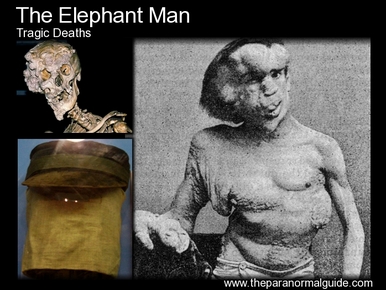
He died 27 years later in London Hospital having become world-famous as the severely-deformed "Elephant Man."
His brief life was a medical marvel and a ‘side show’ attraction.
Tis true, my form is something odd...
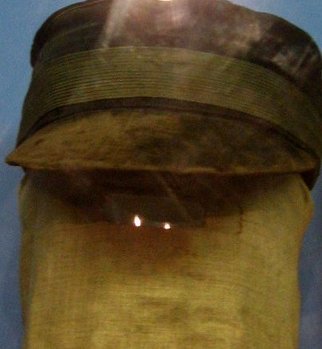 The hood Merrick wore when out in public.
The hood Merrick wore when out in public. but blaming me, is blaming God,
Could I create myself anew
I would not fail in pleasing you."
- Poem often quoted by Joseph Merrick, The Elephant Man.
Joseph Carey Merrick was born on 5 August, 1862, to Joseph Rockley Merrick and Mary Jane Merrick. His mother loved him dearly, and up until his second year, he seemed to be an ordinary child. But then tumours began to appear on his face, and as he aged, these tumours grew grotesquely large and into a greyish colour. His parents believed that this physical deformity was caused by the fact that his mother was knocked over by a circus elephant when she was pregnant with him.
Although he seemed to grow more and more “odd” with every passing year, he still had a pretty normal childhood. He went to school, did household chores, and much of what every other child does. Tragedy struck him when he was 11 years of age, with his beloved mother dying of bronchial pneumonia. The one person who loved him unconditionally was gone.
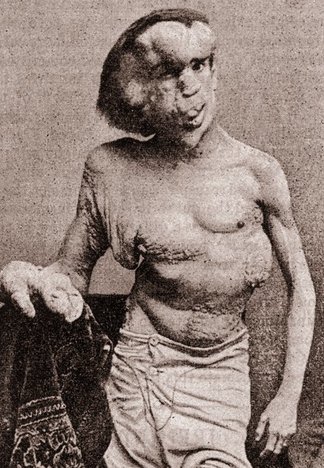 Joseph Merrick.
Joseph Merrick. Eventually he decided to combat one evil with another. He left his father’s house and moved into a workhouse. He spent four years in that hell-hole, a place where inmates were known as “indoor paupers” and where bullying and abuse was strife. Eventually he managed to get out, and got himself a job as a ‘visual oddity’. He was exhibited as a ‘Half-a-Man and Half –an-Elephant’, and moved to London where he was displayed in a shop window on Whitechapel Road, across from London Hospital.
While he was on display, he was noticed by Surgeon Frederick Treves. Treves invited Joseph to the hospital to be examined, and noticed that his head circumference was 36 inches, his right wrist was 12 inches, and one of his fingers was five inches in circumference. He noted that Joseph had grey warts covering his skin, and that an unpleasant smell was omitted from them. But it was also noted that Joseph had a good mind, and was healthy in every other way.
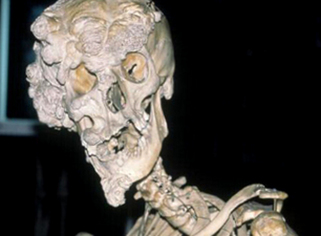 The skull of Joseph Merrick.
The skull of Joseph Merrick. Treves took Joseph back to the hospital and tended to his wounds. The hospital though did not have a wing for “incurables”, as they called it, so required Joseph to be discharged. Treves, with the full support and assistance of the hospital Chairman, Francis Carr Gomm, tried his hardest to find somewhere for Joseph to live, but to no avail. Gomm ended up writing a letter to the London Times, detailing Joseph’s history. His story caused such an outpouring of sympathy that he got himself many sponsors, and even received a visit from the Princess of Wales, Alexandra. He became very popular in ‘High Society’ and with their help, was given a permanent home at the Hospital.
He was also able to visit the theatre, something he’d always wanted to do, go on holidays around the country, write poetry and letters to his friends.
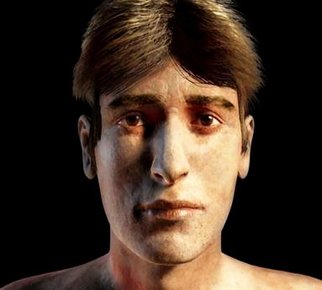 How he likely would have looked had he not had the deformities.
How he likely would have looked had he not had the deformities. Sadly, Joseph died on the 11 April, 1890, and he was only 27 years of age. As he risked dying from suffocation if he slept lying down, he would sleep sitting up, pillows propped behind him, with his head resting on his knee. I can’t imagine it would be very comfortable at all. When he was found, it was presumed that he had either slipped off the pillows in his sleep and suffocated, or that he had voluntarily decided to sleep like other people, and had suffocated himself. New research points to the possibility that perhaps the weight of his head crushed his spinal cord, causing instant death. This seems like a much more pain free death, and I hope he was given that gentle reprieve.
Joseph’s skeleton remains in the pathology collection at the Royal London Hospital, but not on public display.
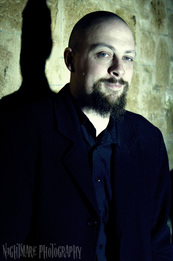




 RSS Feed
RSS Feed
